Another international retirement from Spain’s squad within a year – Gerard Pique, who has been the face of the current generation of Spain’s central defence. The 31-year-old Barcelona man has just surpassed his 100th Spain Cap by the fixture against Iran during Russia 2018. Being part of Spain’s successful World Cup 2010 and Euro Cup 2012 campaigns, Pique had already reached the peak of the growth curve of his football career.
Under the mentorship of captains like Carles Puyol and the leadership of managers like del Bosque, Pep Guardiola and the current Barcelona boss Ernesto Valverde, the tactical profile of Pique has established and evolved at both club and international level over the years eventually leading up to his tactical maturity. His journey with Barcelona is still on a stable track despite the ups and downs. Let’s go deeper into the evolution phases of Pique’s football career to have an outlook on how the tactical maturity of the Spaniard over the years can elongate his club career at Barcelona.
Tactical inception and growth: 2004-2012
Pique is a well-refined product of La Masia who began his youth career with Barcelona as a defensive midfielder in 1997. However, unlike the other academy graduates, he debuted his senior club career with Manchester United in 2004, instead of his boyhood club. Yet, Pique finally returned to Barcelona in 2009 as a centre-back, though not even close to being the first-choice, under the leadership of Guardiola. There, he shared the duties of a ball-playing centre-back and distributor alongside Márquez and Puyol, his ‘soul guardian’ and Barcelona captain.
Being a La Masia product, Pique earned a reputation as a defender who is quite comfortable with the ball on his feet and ultimately became Guardiola’s first-choice centre-back. Due to the fierce, wall-like presence of Puyol, the defensive actions of Pique were not that prominent but were decent enough to indicate his emergent talent in the department. His interceptions and tackles dropped from 1.6 and 1.8 per game in 2009-10 to 1.3 and 1.5 respectively in 2011-12. The same went with his clearance stats which dropped from 4.6 to 2.4 per game. But even the dropped averages were good enough for a ball-playing and forward-going defender with an amazing passing accuracy of 87 per cent during that period.
On the international front too, Pique debuted his senior career with Spain in the same year, 2009, winning at home against England, that followed by a successful World Cup 2010 campaign, where again, his highly compatible pairing with Puyol at the heart of the defence caught the attention. With Puyol assigned the role of a relatively static defender leading the backline, Pique had the licence to go up. However, during another successful campaign of Euro 2012, Pique was without Puyol for the first time owing to the injury of his partner. This was made up by Real Madrid’s Sergio Ramos shifting inside from his right-back position to partner Barcelona defender. From then on, Pique has developed another outstanding central defensive partnership with his Clásico rival before ending it with the retirement announcement a week ago. Although Pique was no more as good with Ramos as he was with Puyol due to changes in roles, the centre-back still proved himself as a frightening tackler over the years of this new partnership which often took some load off the defensive midfielder of their team, Sergio Busquets.
Other than tackling, Pique has some decent records in clearances, blocking, and interceptions too at both clubs and international level. Under the captaincy of Puyol and leadership of del Bosque and Guardiola, Pique’s defensive performance evolved in a positive dimension, leading him to earn La Liga’s Best Defender title for 2009-10 season – the same football year when he became a world champion with Spain, matched the record of conceding merely two goals in the whole tournament, and got featured in FIFA FIFPro World XI and UEFA Team of the Year for the first time.
Tactical maturity: 2012 – Present
With the emerging Pique-Ramos pairing from Euro 2012 onward, Spain and del Bosque revitalised their central defence, especially following the retirement of Puyol. However, Barcelona’s central defence, and so Pique, was still unsettled without their leading defender. The other options, including Jérémy Mathieu and Thomas Vermaelen, were unable to follow the footsteps of Puyol, especially when defending counter-attacks while Pique would be on his forward duty. But despite the lack of an effective partnership, Pique kept on refining his defensive attributes. Comparing to his 2012 stats, Pique’s interceptions, tackles, and clearances all increased to 2.2, 2.1, and 4.4 per game by 2015.

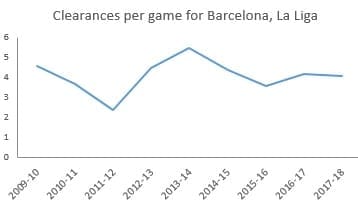
In fact, from the growth phase of before 2012 till 2016, Pique has been featured four more times in UEFA Team of the Year and three more times in FIFA FIFPro World XI with an amazing average passing accuracy increased to 90 per cent during this period. This just rules out the criticism that Pique could have been good with Puyol only. His tactical evolution continued even after Puyol too.
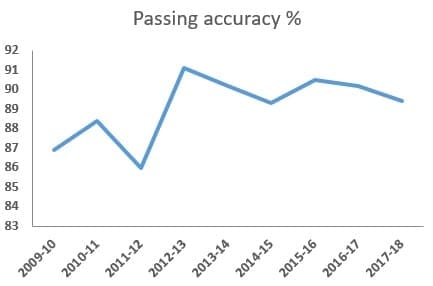
Then with the signing of French centre-back Samuel Umtiti in 2016 by Barcelona manager Luis Enrique, Pique found his match and was forced to re-invent himself to make the new defensive partnership at the club as compatible as possible. With this, the Frenchmen got the licence to go up while Pique’s new role to date has been to stay back and clear the ball out of the defence lines while joining attack only when needed. His heat map below covering the fixtures from 2016 till present, shows his spatial restriction to the defensive half since the last two seasons.
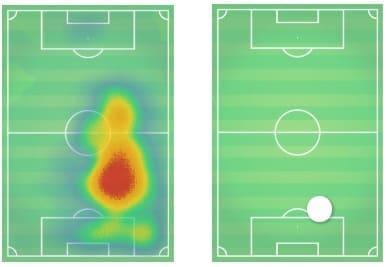
With his passing ability already refined and matured due to playing in tiki-taka culture and growing under Guardiola’s offensive passing game (averaged 90 per cent per game from 2016 onward), the new partnership with Umtiti led the Spaniard to shine some of his defensive attributes – clearances and blocks – despite the weakening of the other ones – tackles and interception. However, still, his tackles and interception have been well-timed and executed at the key moments. The quantity has been decreased but the quality is still maintained.
With his exceptional improving-with-time, clearances (as shown in a graph above) and blocks per game (as shown in the graph below), Pique is comfortable with bringing the ball out of defence thus sweeping up the incoming threats. He is intelligent enough to use his body one-on-one over his opponent, especially when it comes to covering depths.
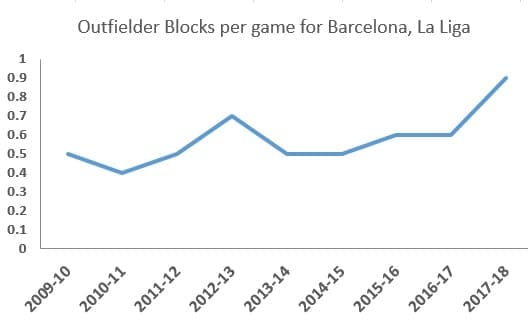

Another non-technical strong attribution of Pique which has improved since the last two seasons includes concentration, something with which he had struggled a few years back. Besides, being the only tall players of Barca at 6’4″, Pique is physically dominant over his opponent with an outstanding winning percentage of aerial duels of over 80 per cent per game for most of the fixtures with Barcelona.
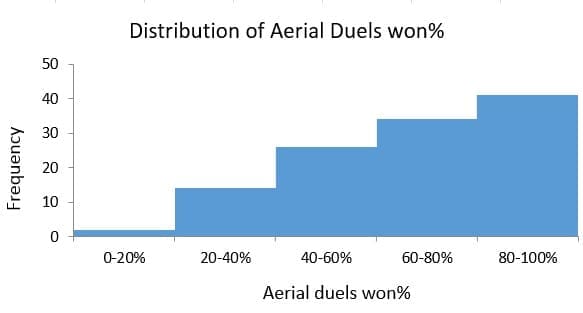
Club career outlook
Sorting it all, Pique is now a defender with passing accuracy as high as 95 per cent per game for most of the games with Barcelona to date, as shown in the frequency distribution graph below. With his strong and ever-improving blocking and clearances record, the Spaniard is said to be tactically evolved across the defensive dimensions and tactically grown in passing and distribution thus is still recognisable as the ball-playing defender though with now spatial restriction. He does lack in the pace and mobility but he makes that up with game reading skills, allowing him to execute well-timed tackles and interceptions.
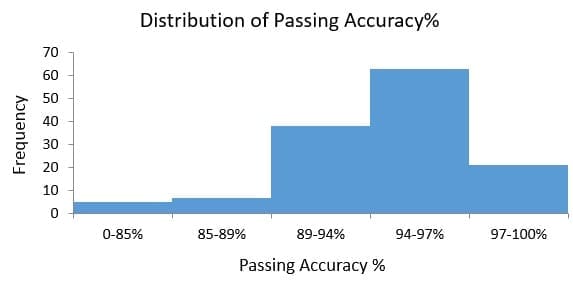
However, the ‘retired’ Spanish international, hasn’t been without question marks. When it came to showing up the pace and mobility during transitional phases of a game, Pique struggled over his age. When it came to defending the high ball, Pique struggled. Finally, when it came to defending set-pieces and even the balls already made into the box during the open play, the 31-year-old struggled due to his lack of short-range mobility in quick instances.
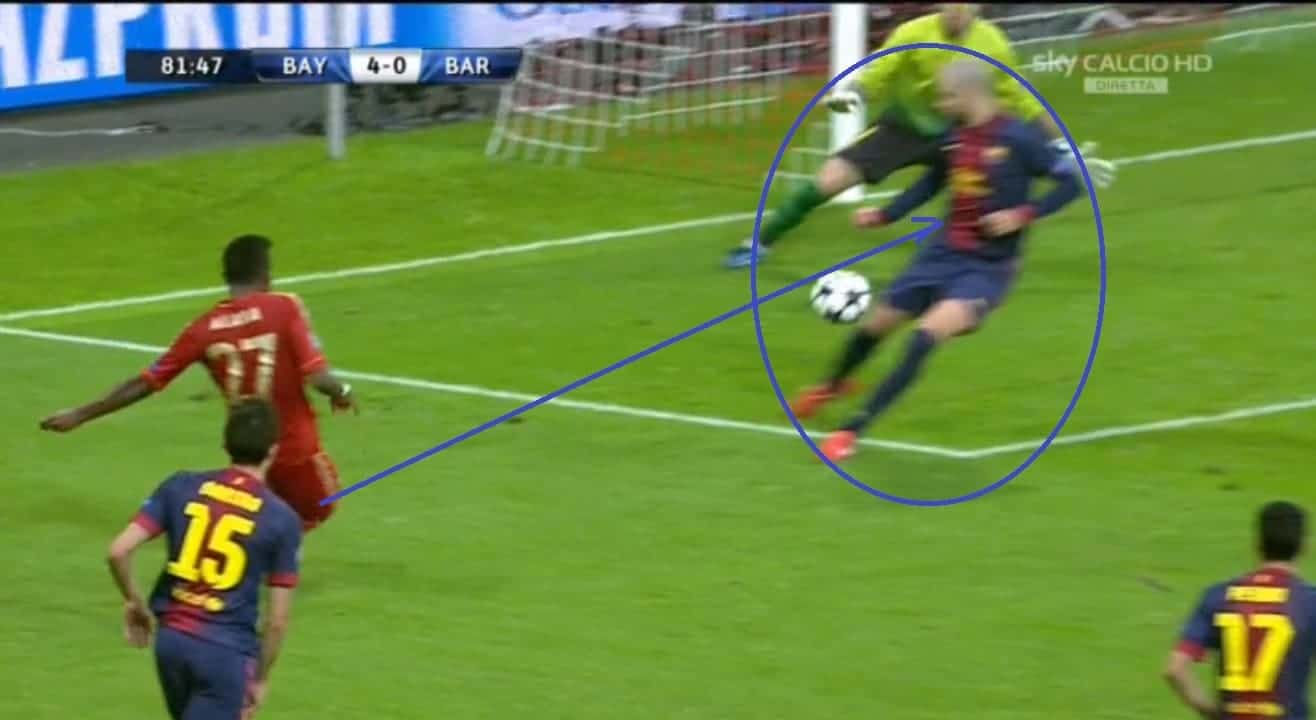
So what do we take from reading this evolved and tactically matured version of Gerard Pique? With age, he is naturally on the verge of losing some of his attributes, but his tactical maturity should enable him to elongate his club career at Barcelona. At this age, Pique is no more a brisk defender – he never was though, but when with the ball, he is crafted enough to form the base of tiki-taka and creativity of the Spanish giants.
With Barcelona currently under re-evolution in the post-Iniesta and post-Neymar era, returning to their tiki-taka and offensive 4-3-3 set-up, they are naturally back to their quick passing and build up style – something which will genuinely suit Pique’s crisp passing to feet, as it has been before. He is not good with the high ball, but with his game reading, he can dictate the play from the heart of defence – again something which re-evolving Barcelona set-up calls for. He is not good in pace, mobility, and attack, but his redefined role in partnership with Umtiti doesn’t demand him to leave his region much either but to stay there and keep the focus on clearing all the threats on time and cleverly blocking the outfielders.
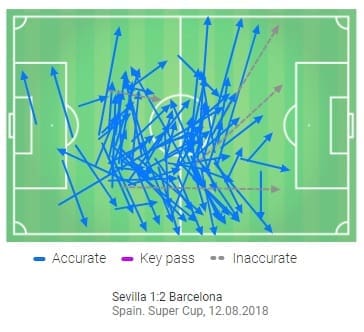
He still is unsettled with the defending of set-pieces and of the ball already into his team’s box. But, with the overall mix of Pique’s defensive and passing attributes which have been filtered to this mature stage of his career, Pique would continue to form an integral part of evolving Barcelona. In fact, not only his unique mix of attributes are behind his evolution and tactical maturity but also has been behind the revitalisation of the role of a young, modern-day central defender who is absolutely veteran in bringing the ball of out the defence and brilliantly well-footed in ball distribution and build-up from the back.

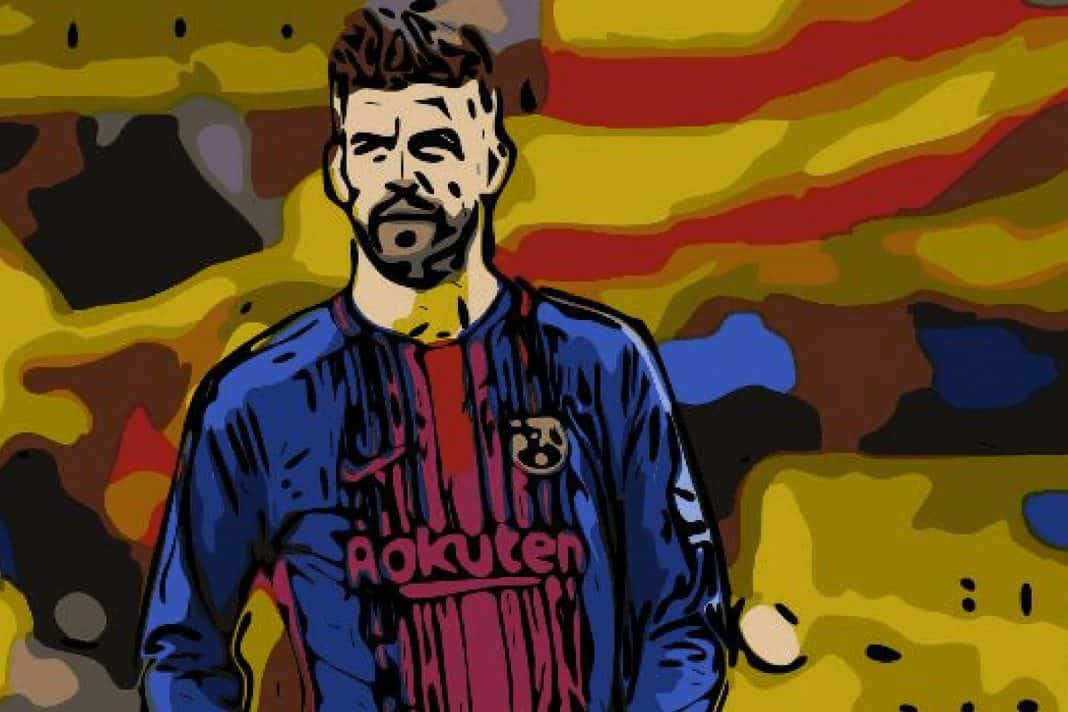


Comments